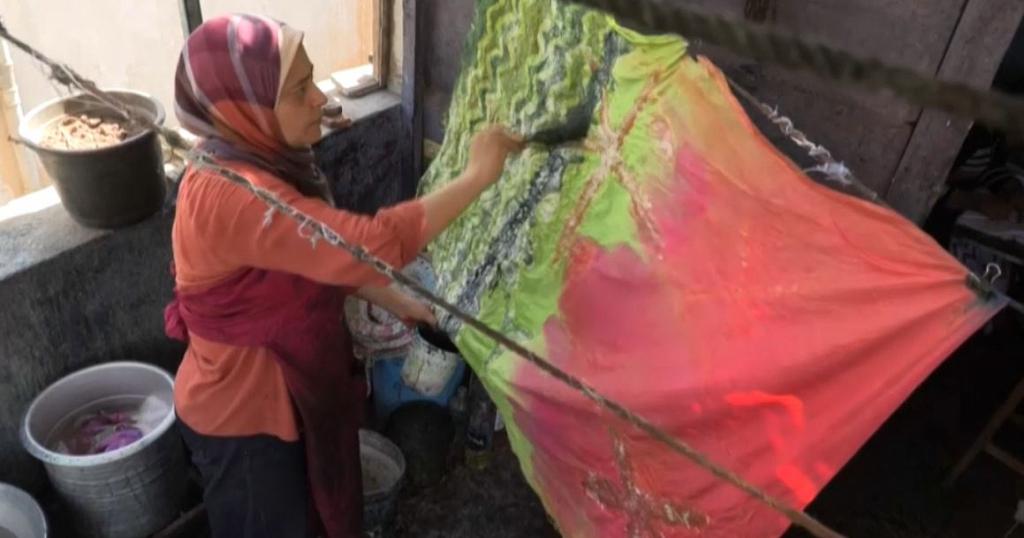
Egyptian Designer and Her Love for Batik
Egyptian batik designer Samar Hassanein has been working in Egypt for years on enhancing the art of batik, a patterned cloth made by using a wax-resistant dyeing technique.
It consists of creating patterns by applying melted wax onto a cloth before dipping it in dye or painting over it with a brush. The fabric is then immersed in boiling water to melt the wax
“Batik has disappeared (in Egypt) because no one (experienced workers) shared their skill. As a teacher, I find that it is very important to provide as much training as I can because people realize how difficult it is when they start learning the techniques.” Samar said.
The duration of the batik-making process can vary from one week to several months depending on the number of colours, patterns and size.
Some Egyptians are now decrying the high number of foreign clothing in the country. They seek to have one of their own in their markets.
“I wish we could have our own Egyptian style, instead of importing it (clothing) from abroad, especially because our heritage has so much variety. We have unique styles in Sinai, in Siwa… we also have peasant clothing, and each one of these is totally different than the other. We also have Nubian clothing, which is a completely different thing;” she added.
The Egyptian Batik is now fighting to survive and stand strong against other batik varieties, especially the ones from Southeast Asia. Samar is now seeking to come up with a better and unique quality that can out-stand the foreign-made Batik.
“Our main competitor in batik [fashion] is Southeast Asia. They have had a great reputation for a very long time so we need to come up with something unique” she said.
The batik fabric has been made in other countries across Africa like Nigeria, Benin and even Ghana. The technique to prepare batik dates back to the golden old age before the new tech era.

